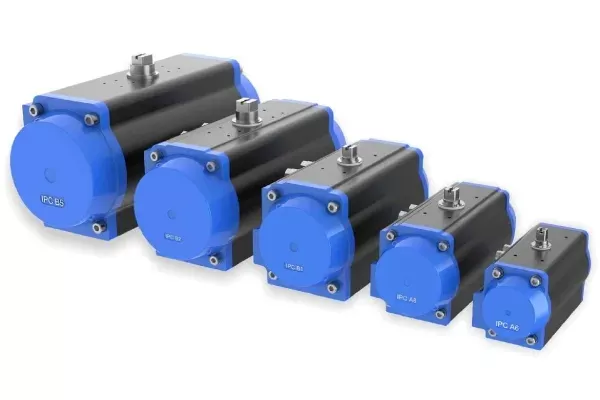Notifications

4 minutes, 37 seconds
-39 Views 0 Comments 0 Likes 0 Reviews

We Are a Premier Control Valve Manufacturer in China, Delivering High-Quality Valves and Control Actuators Customized to Meet a Wide Range of Industrial Applications.
Pneumatic valve actuators are essential components in industrial systems, providing efficient and reliable control of valve operations—especially where rapid response and energy efficiency are critical. These actuators convert compressed air energy into mechanical motion that either rotates or lifts a valve stem, depending on the valve design.
Understanding the two primary types of pneumatic actuators—single-acting (spring return) and double-acting—is key to selecting the right actuator for your specific application.
Single-acting actuators operate using compressed air in conjunction with a spring. They come in two configurations:
Normally Open (NO):
Air pressure pushes the piston outward to close the valve. When air is removed, the spring forces the piston inward, reopening the valve.
Normally Closed (NC):
Air pressure moves the piston outward to open the valve. When air supply stops, the spring compresses and moves the piston back inward, closing the valve.
This design ensures fail-safe operation, automatically returning the valve to a default position upon air supply loss.
Double-acting actuators rely solely on compressed air to move the piston in both directions—opening and closing the valve. An external solenoid valve alternates air flow between two ports (Port A and Port B) to control piston movement.
Air to Port A: pushes piston outward, opening the valve.
Air to Port B: pushes piston inward, closing the valve.
This design offers faster, more precise control, as both opening and closing are powered by air pressure without relying on a spring.
Air applied to Port A: piston moves outward, compressing the spring, turning the valve to open or close based on NO or NC setup.
Loss of air pressure: spring returns piston to default valve position, ensuring safety on air failure.
Air to Port A: piston moves outward, turning the valve open.
Air to Port B: piston moves inward, turning the valve closed.
Both movements are powered by air pressure, enabling rapid and repeatable valve positioning.
| Feature | Single-Acting | Double-Acting |
|---|---|---|
| Design Complexity | Simple | More complex (needs solenoid valve) |
| Air Consumption | Less (air used for one direction) | Higher (air used for both directions) |
| Fail-Safe Operation | Yes, spring returns valve to default | No, requires air pressure to maintain position |
| Response Time | Slower (spring return) | Faster (air-powered both ways) |
| Control Precision | Basic | High |
Consider these factors:
Fail-Safe Needs: Use single-acting actuators when automatic return to a safe position is required after air loss.
Speed & Precision: Choose double-acting actuators for fast, precise valve control.
Air Supply Capacity: Single-acting actuators are more efficient for limited air supply systems.
System Complexity: Simple systems can use single-acting actuators; complex, automated setups benefit from double-acting types.
Pneumatic valve actuators play a critical role in industrial valve automation. Selecting between single-acting and double-acting actuators depends on your application’s need for fail-safe operation, response speed, control precision, and air supply availability. Understanding their working principles ensures optimal actuator choice, enhancing system reliability, safety, and performance across diverse industries.Know more about Google SEO Directory

